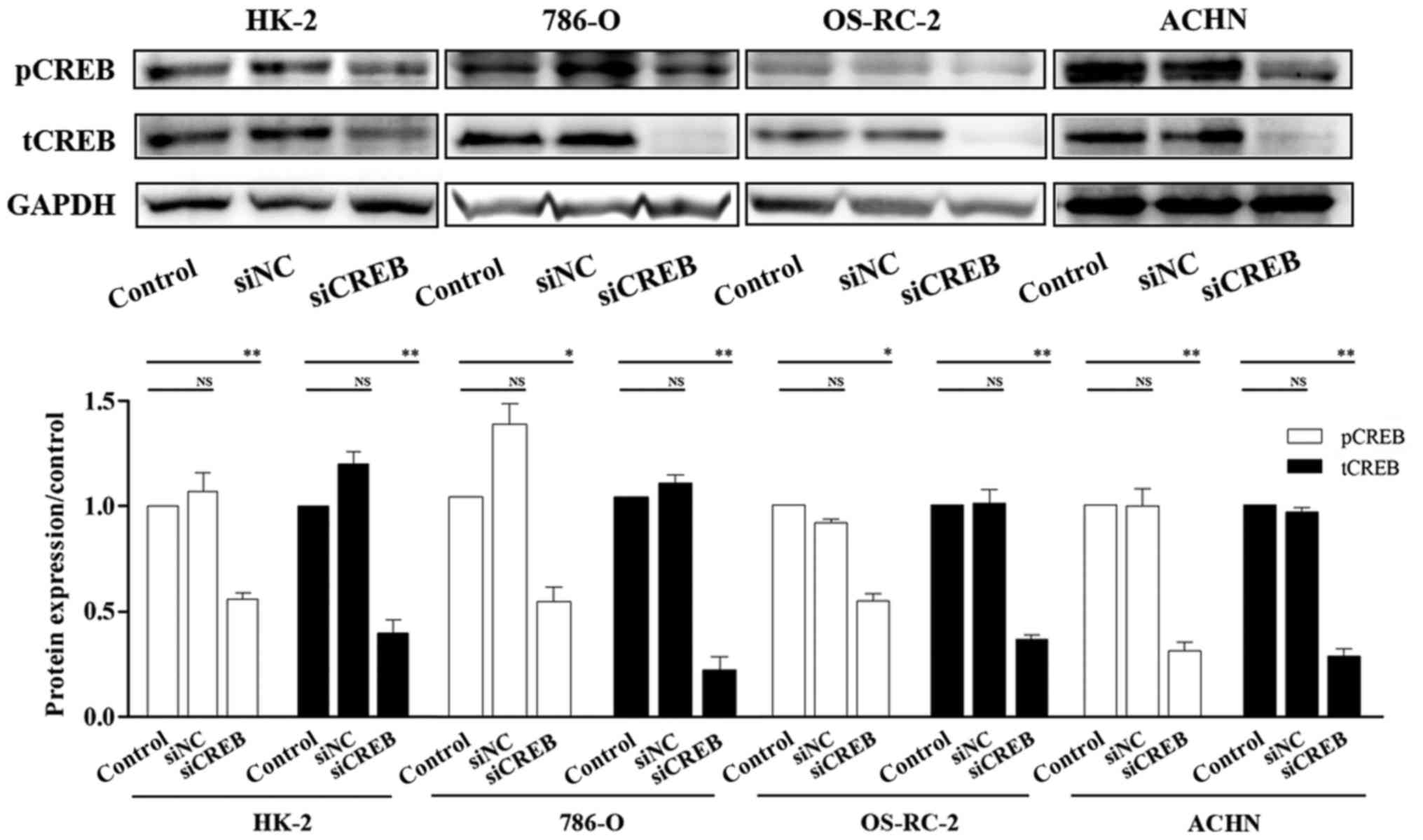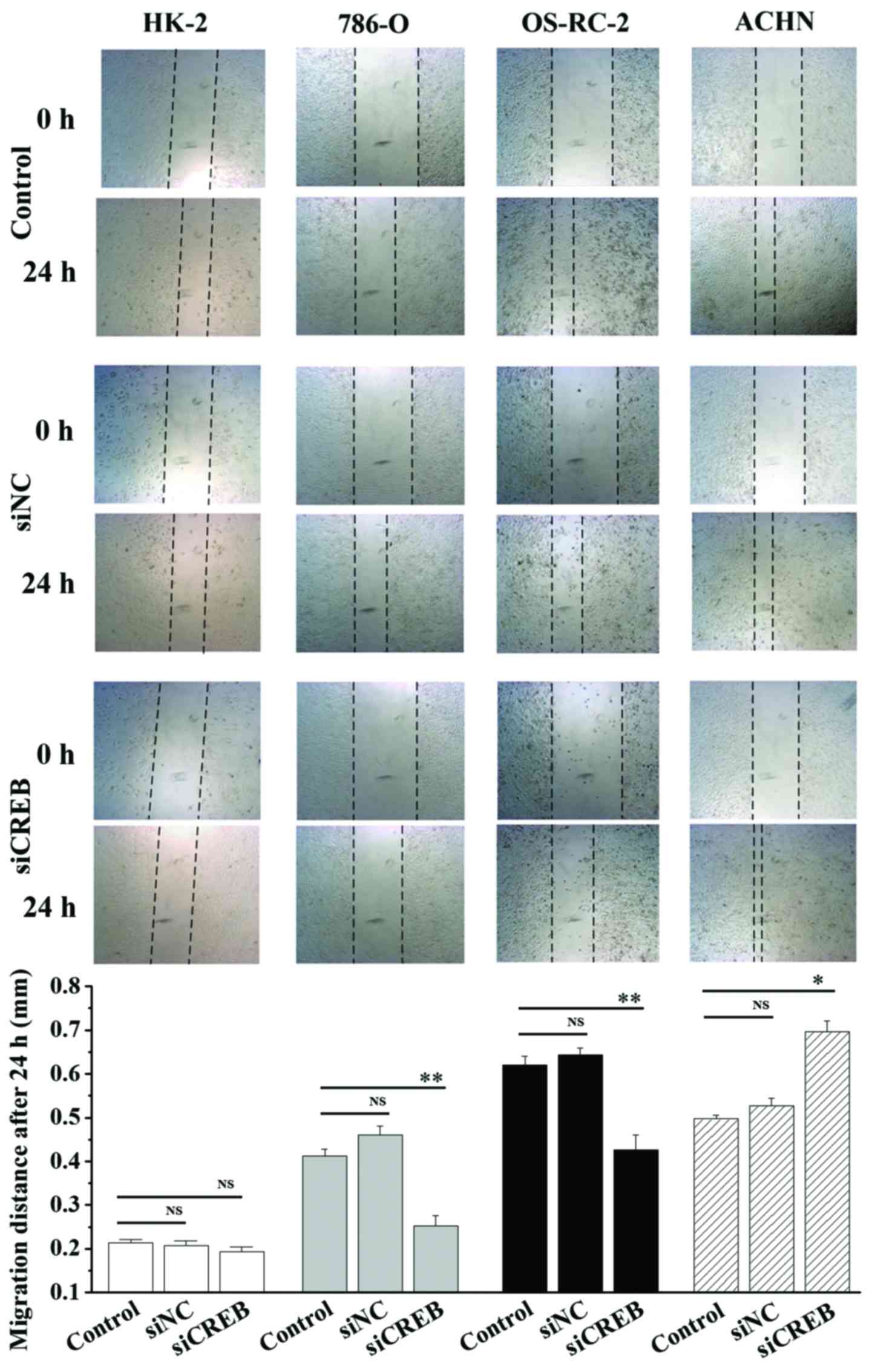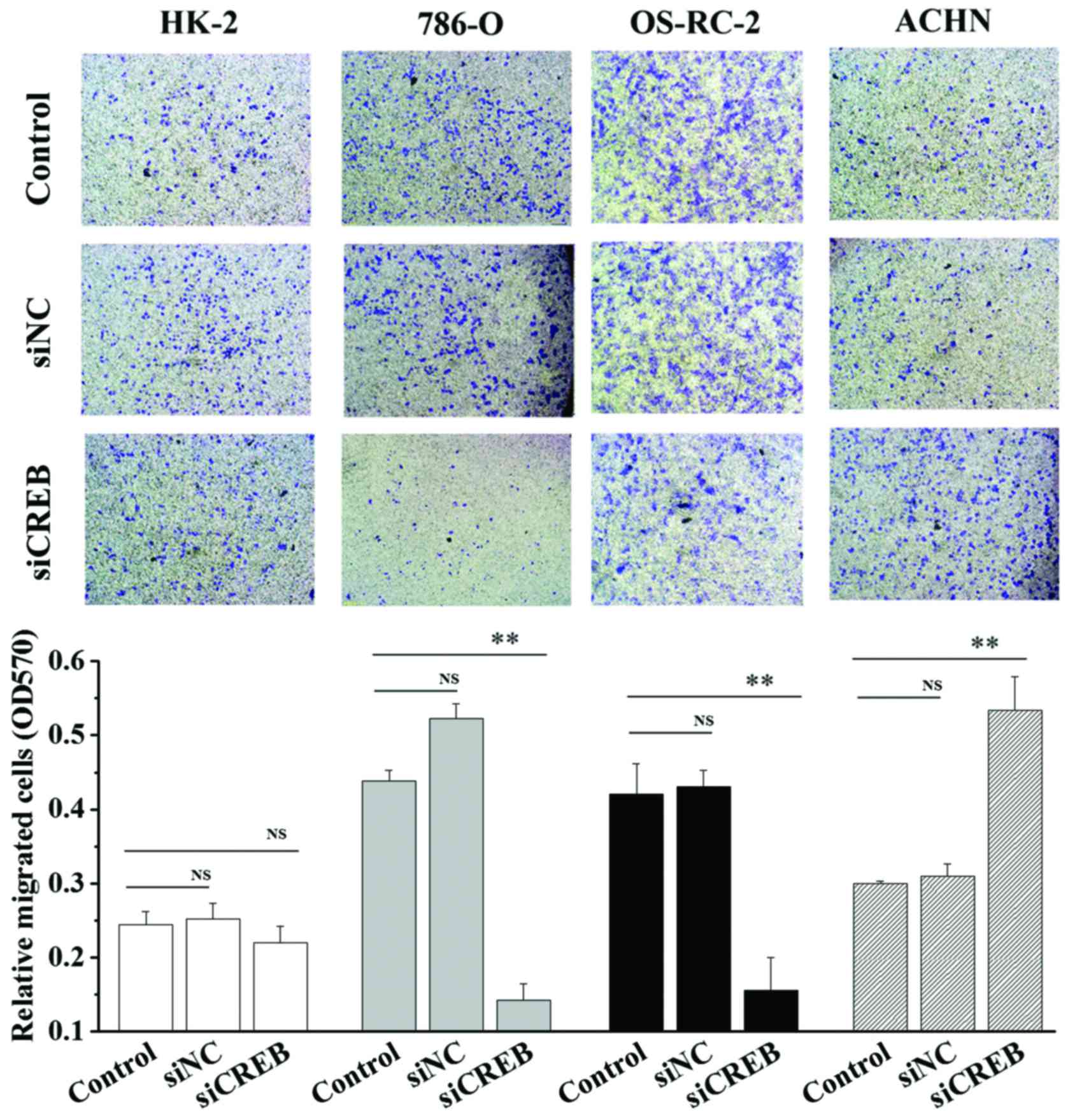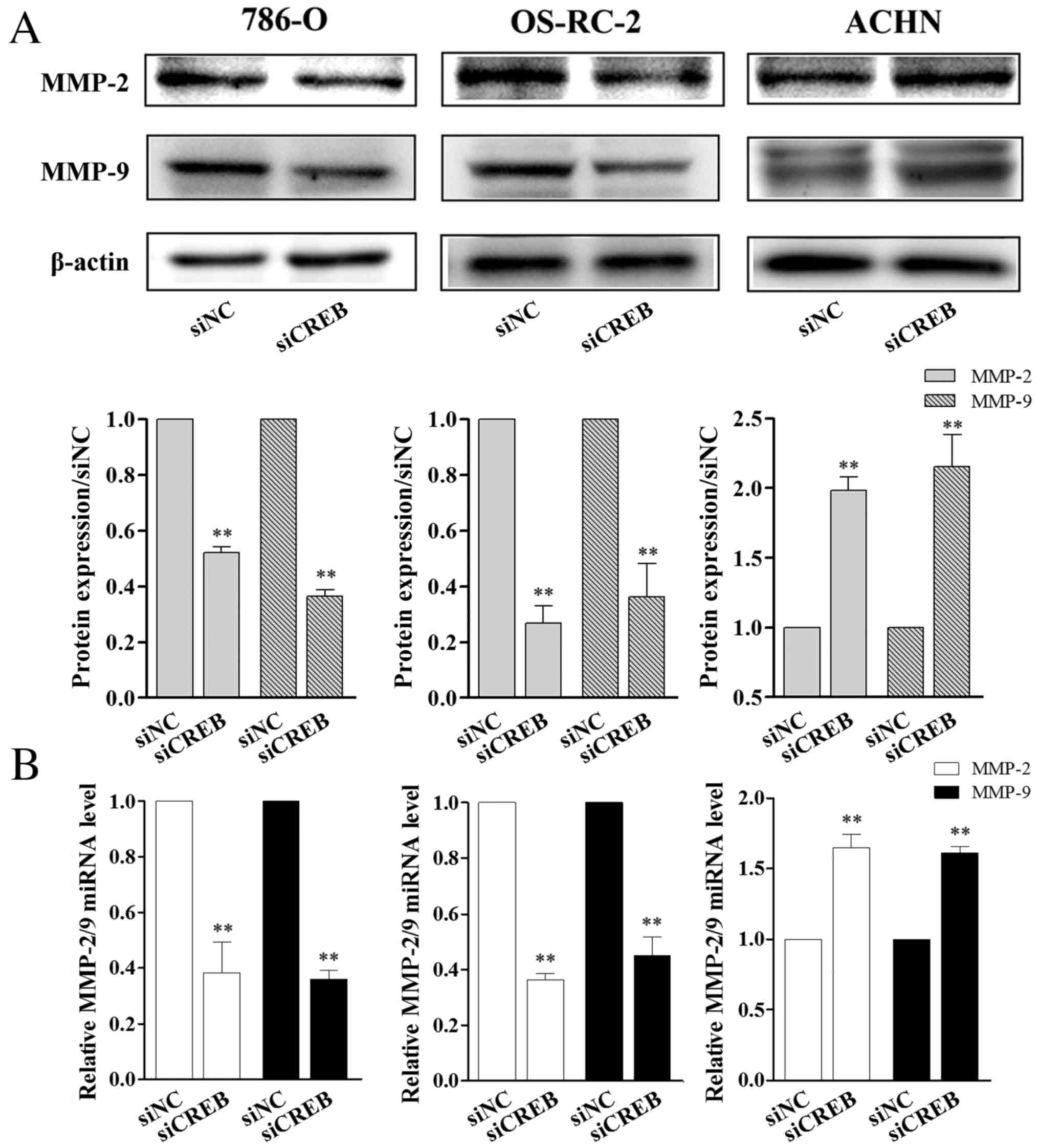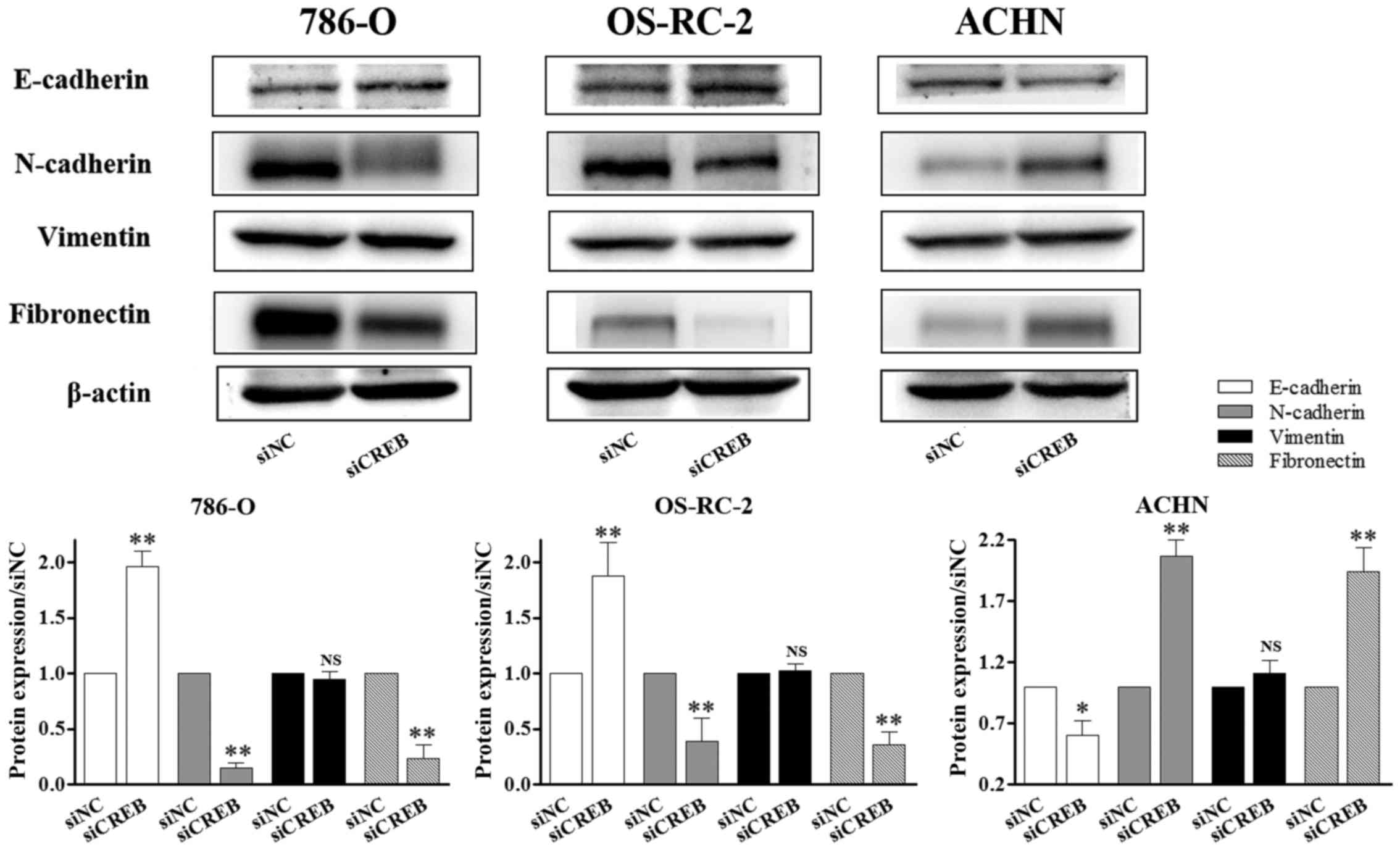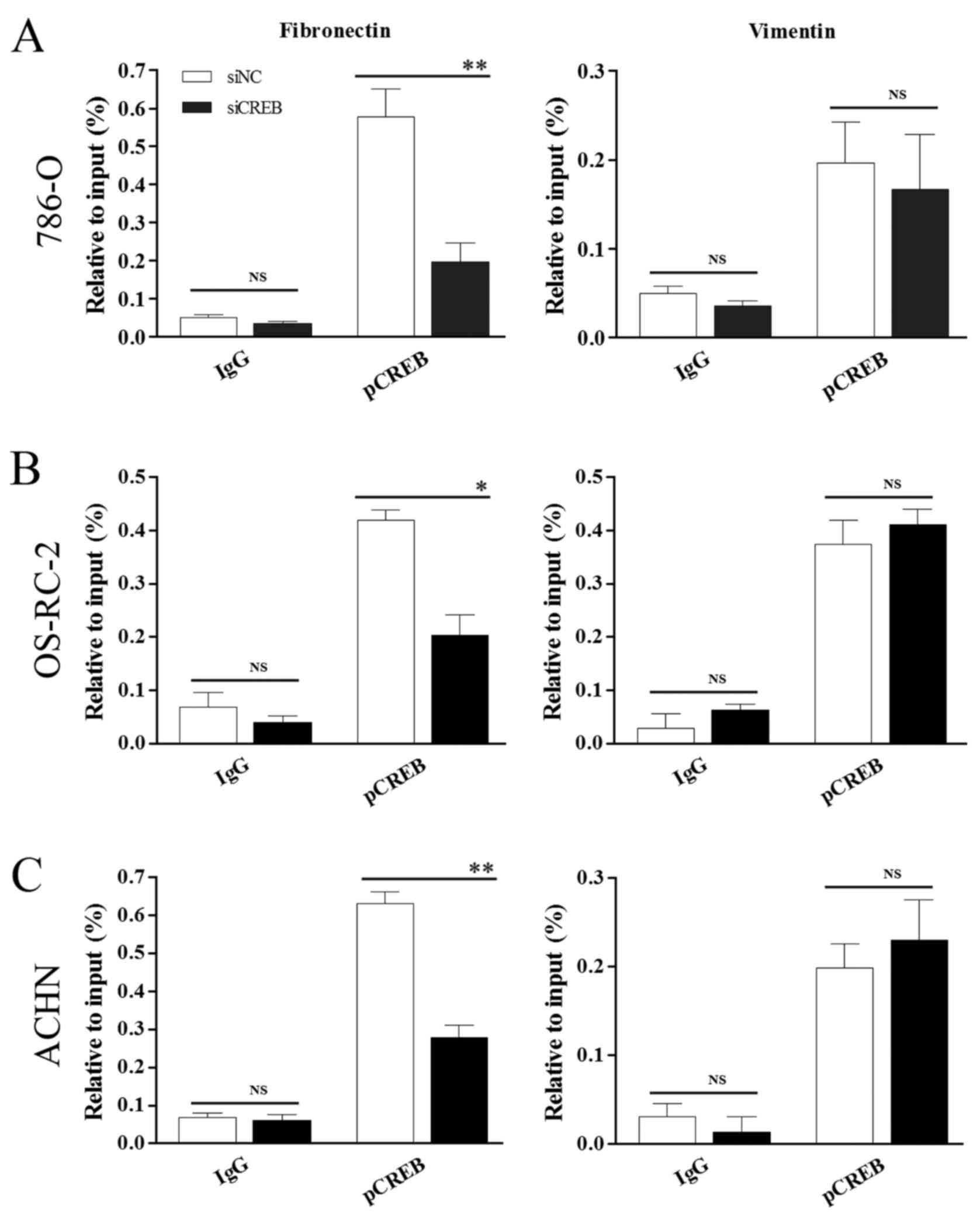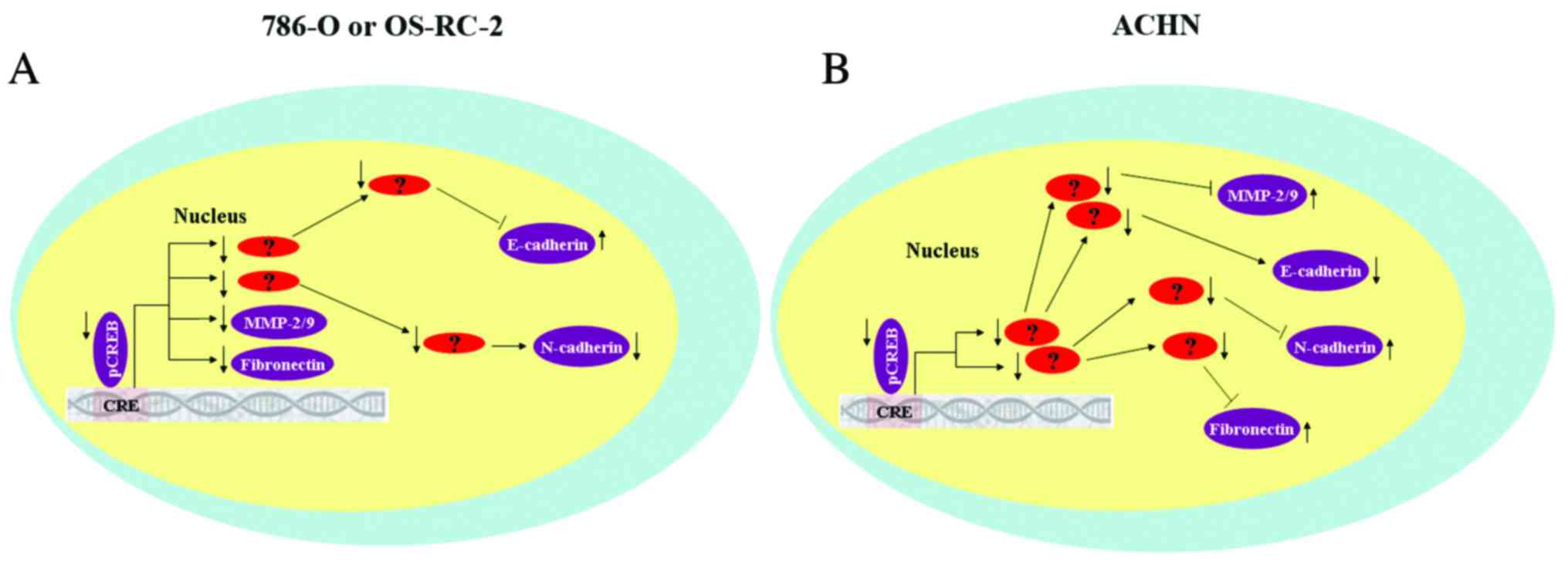|
1
|
Ljungberg B, Campbell SC, Choi HY, Jacqmin
D, Lee JE, Weikert S and Kiemeney LA: The epidemiology of renal
cell carcinoma. Eur Urol. 60:615–621. 2011. View Article : Google Scholar
|
|
2
|
Siegel RL, Miller KD and Jemal A: Cancer
statistics, 2015. CA Cancer J Clin. 65:5–29. 2015. View Article : Google Scholar
|
|
3
|
Mastoraki A, Mastoraki S, Tsikala-Vafea M,
Papanikolaou IS, Lazaris A, Smyrniotis V and Arkadopoulos N:
Prognostic benefit of surgical management of renal cell carcinoma
invading the inferior vena cava. Indian J Surg Oncol. 8:14–18.
2017. View Article : Google Scholar
|
|
4
|
Fu L, Minton DR, Zhang T, Nanus DM and
Gudas LJ: Genome-wide profiling of TRACK kidneys shows similarity
to the human ccRCC transcriptome. Mol Cancer Res. 13:870–878. 2015.
View Article : Google Scholar :
|
|
5
|
Liang L, Li L, Zeng J, Gao Y, Chen YL,
Wang ZQ, Wang XY, Chang LS and He D: Inhibitory effect of silibinin
on EGFR signal-induced renal cell carcinoma progression via
suppression of the EGFR/MMP-9 signaling pathway. Oncol Rep.
28:999–1005. 2012.
|
|
6
|
Eggener SE, Yossepowitch O, Pettus JA,
Snyder ME, Motzer RJ and Russo P: Renal cell carcinoma recurrence
after nephrectomy for localized disease: Predicting survival from
time of recurrence. J Clin Oncol. 24:3101–3106. 2006. View Article : Google Scholar
|
|
7
|
Jean D and Bar-Eli M: Regulation of tumor
growth and metastasis of human melanoma by the CREB transcription
factor family. Mol Cell Biochem. 212:19–28. 2000. View Article : Google Scholar
|
|
8
|
Xiao X, Li BX, Mitton B, Ikeda A and
Sakamoto KM: Targeting CREB for cancer therapy: Friend or foe. Curr
Cancer Drug Targets. 10:384–91. 2010. View Article : Google Scholar :
|
|
9
|
Sakamoto KM and Frank DA: CREB in the
pathophysiology of cancer: Implications for targeting transcription
factors for cancer therapy. Clin Cancer Res. 15:2583–2587. 2009.
View Article : Google Scholar :
|
|
10
|
Shaywitz AJ and Greenberg ME: CREB: A
stimulus-induced transcription factor activated by a diverse array
of extracellular signals. Annu Rev Biochem. 68:821–861. 1999.
View Article : Google Scholar
|
|
11
|
Huang S, Ren Y, Wang P, Li Y, Wang X,
Zhuang H, Fang R, Wang Y, Liu N, Hehir M and Zhou JX: Transcription
factor CREB is involved in CaSR-mediated cytoskeleton gene
expression. Anat Rec (Hoboken). 298:501–512. 2015. View Article : Google Scholar
|
|
12
|
Zhuang H, Meng X, Li Y, Wang X, Huang S,
Liu K, Hehir M, Fang R, Jiang L, Zhou JX, et al: Cyclic AMP
responsive element-binding protein promotes renal cell carcinoma
proliferation probably via the expression of spindle and
kinetochore-associated protein 2. Oncotarget. 7:16325–16337.
2016.
|
|
13
|
Cho EC, Mitton B and Sakamoto KM: CREB and
leukemogenesis. Crit Rev Oncog. 16:37–46. 2011. View Article : Google Scholar :
|
|
14
|
van der Sligte NE, Kampen KR, ter Elst A,
Scherpen FJ, Meeuwsen-de Boer TG, Guryev V, Van Leeuwen FN,
Kornblau SM and de Bont ES: Essential role for cyclic-AMP
responsive element binding protein 1 (CREB) in the survival of
acute lymphoblastic leukemia. Oncotarget. 6:14970–14981. 2015.
View Article : Google Scholar :
|
|
15
|
Peng B, Lei N, Chai Y, Chan EK and Zhang
JY: CIP2A regulates cancer metabolism and CREB phosphorylation in
non-small cell lung cancer. Mol Biosyst. 11:105–114. 2015.
View Article : Google Scholar
|
|
16
|
Seo HS, Liu DD, Bekele BN, Kim MK, Pisters
K, Lippman SM, Wistuba II and Koo JS: Cyclic AMP response
element-binding protein overexpression: A feature associated with
negative prognosis in never smokers with non-small cell lung
cancer. Cancer Res. 68:6065–6073. 2008. View Article : Google Scholar :
|
|
17
|
Singh R, Shankar BS and Sainis KB:
TGF-β1-ROS-ATM-CREB signaling axis in macrophage mediated migration
of human breast cancer MCF7 cells. Cell Signal. 26:1604–1615. 2014.
View Article : Google Scholar
|
|
18
|
Zhang S, Chen L, Cui B, Chuang HY, Yu J,
Wang-Rodriguez J, Tang L, Chen G, Basak GW and Kipps TJ: ROR1 is
expressed in human breast cancer and associated with enhanced
tumor-cell growth. PLoS One. 7:e311272012. View Article : Google Scholar :
|
|
19
|
Liu YL, Lai F, Wilmott JS, Yan XG, Liu XY,
Luan Q, Guo ST, Jiang CC, Tseng HY, R A Scolyer, et al: Noxa
upregulation by oncogenic activation of MEK/ERK through CREB
promotes autophagy in human melanoma cells. Oncotarget.
5:11237–11251. 2014. View Article : Google Scholar :
|
|
20
|
Kovach SJ, Price JA, Shaw CM, Theodorakis
NG and McKillop IH: Role of cyclic-AMP responsive element binding
(CREB) proteins in cell proliferation in a rat model of
hepatocellular carcinoma. J Cell Physiol. 206:411–419. 2006.
View Article : Google Scholar
|
|
21
|
Wang X, Ren Y, Zhuang H, Meng X, Huang S,
Li Y, Hehir M and Wang P: Decrease of phosphorylated proto-oncogene
CREB at Ser 133 site inhibits growth and metastatic activity of
renal cell cancer. Expert Opin Ther Targets. 19:985–95. 2015.
View Article : Google Scholar
|
|
22
|
Zi Y, Zhao W, Zhou J, He H and Xie M:
Silencing of TMSG1 enhances metastasis capacity by targeting
V-ATPase in breast cancer. Int J Clin Exp Pathol. 8:1312–1320.
2015.
|
|
23
|
Xia M, Yao L, Zhang Q, Wang F, Mei H, Guo
X and Huang W: Long noncoding RNAHOTAIR promotes metastasis of
renal cell carcinoma by up-regulating histone H3K27demethylase
JMJD3. Oncotarget. Feb 3–2017.(Epub ahead of print).
|
|
24
|
Wang P, Yan H and Li JC: CREB-mediated
Bcl-2 expression in trichosanthin-induced Hela cell apoptosis.
Biochem Biophys Res Commun. 363:101–105. 2007. View Article : Google Scholar
|
|
25
|
Livak KJ and Schmittgen TD: Analysis of
relative gene expression data using real-time quantitative PCR and
the 2(−Delta Delta C (T)) Method. Methods. 25:402–408. 2001.
View Article : Google Scholar
|
|
26
|
Jeon SH, Chae BC, Kim HA, Seo GY, Seo DW,
Chun GT, Yie SW, Eom SH and Kim PH: The PKA/CREB pathway is closely
involved in VEGF expression in mouse macrophages. Mol Cells.
23:23–29. 2007.
|
|
27
|
Khoufache K, Bazin S, Girard K,
Guillemette J, Roy MC, Verreault JP, Al-Abed Y, Foster W and Akoum
A: Macrophage migration inhibitory factor antagonist blocks the
development of endometriosis in vivo. PLoS One. 7:e372642012.
View Article : Google Scholar :
|
|
28
|
Moss LA Shuman, Jensen-Taubman S and
Stetler-Stevenson WG: Matrix metalloproteinases: Changing roles in
tumor progression and metastasis. Am J Pathol. 181:1895–1889. 2012.
View Article : Google Scholar :
|
|
29
|
Hofmann UB, Houben R, Bröcker EB and
Becker JC: Role of matrix metalloproteinases in melanoma cell
invasion. Biochimie. 87:307–314. 2005. View Article : Google Scholar
|
|
30
|
Cheng HL, Hsieh MJ, Yang JS, Lin CW, Lue
KH, Lu KH and Yang SF: Nobiletin inhibits human osteosarcoma cells
metastasis by blocking ERK and JNK-mediated MMPs expression.
Oncotarget. 7:35208–35223. 2016.
|
|
31
|
Melnikova VO, Mourad-Zeidan AA, Lev DC and
Bar-Eli M: Platelet-activating factor mediates MMP-2 expression and
activation via phosphorylation of cAMP-response element-binding
protein and contributes to melanoma metastasis. J Biol Chem.
281:2911–2922. 2006. View Article : Google Scholar
|
|
32
|
Taparra K, Tran PT and Zachara NE:
Hijacking the hexosamine biosynthetic pathway to promote
EMT-mediated neoplastic phenotypes. Front Oncol. 6:852016.
View Article : Google Scholar :
|
|
33
|
Kinjo K, Sandoval S, Sakamoto KM and
Shankar DB: The role of CREB as a proto-oncogene in hematopoiesis.
Cell Cycle. 4:1134–1335. 2005. View Article : Google Scholar
|
|
34
|
Ma X, Gu L, Li H, Gao Y, Li X, Shen D,
Gong H, Li S, Niu S, Zhang Y, et al: Hypoxia-induced overexpression
of stanniocalcin-1 is associated with the metastasis of early stage
clear cell renal cell carcinoma. J Transl Med. 13:562015.
View Article : Google Scholar :
|
|
35
|
Li H, Zhang K, Liu LH, Ouyang Y, Bu J, Guo
HB and Xiao T: A systematic review of matrix metalloproteinase 9 as
a biomarker of survival in patients with osteosarcoma. Tumour Biol.
35:5487–5491. 2014. View Article : Google Scholar
|
|
36
|
Willis AL, Sabeh F, Li XY and Weiss SJ:
Extracellular matrix determinants and the regulation of cancer cell
invasion stratagems. J Microsc. 251:250–60. 2013. View Article : Google Scholar
|
|
37
|
Park JK, Park SH, So K, Bae IH, Yoo YD and
Um HD: ICAM-3 enhances the migratory and invasive potential of
human non-small cell lung cancer cells by inducing MMP-2 and MMP-9
via Akt and CREB. Int J Oncol. 36:181–192. 2010.
|
|
38
|
Yang SF, Lee WJ, Tan P, Tang CH, Hsiao M,
Hsieh FK and Chien MH: Upregulation of miR-328 and inhibition of
CREB-DNA-binding activity are critical for resveratrol-mediated
suppression of matrix metalloproteinase-2 and subsequent metastatic
ability in human osteosarcomas. Oncotarget. 6:2736–2753. 2015.
View Article : Google Scholar
|
|
39
|
Sun B, Rong R, Jiang H, Zhang H, Wang Y,
Bai X, Zhang M, Ma J, Xia S, Shu W, et al: Prostaglandin E2
receptor EP1 phosphorylate CREB and mediates MMP2 expression in
human cholangiocarcinoma cells. Mol Cell Biochem. 378:195–203.
2013. View Article : Google Scholar
|
|
40
|
Lee DK, Park EJ, Kim EK, Jin J, Kim JS,
Shin IJ, Kim BY, Lee H and Kim DE: Atorvastatin and simvastatin,
but not pravastatin, up-regulate LPS-induced MMP-9 expression in
macrophages by regulating phosphorylation of ERK and CREB. Cell
Physiol Biochem. 30:499–511. 2012. View Article : Google Scholar
|
|
41
|
Chaffer CL and Weinberg RA: A perspective
on cancer cell metastasis. Science. 331:1559–1564. 2011. View Article : Google Scholar
|
|
42
|
Ni D, Ma X, Li HZ, Gao Y, Li XT, Zhang Y,
Ai Q, Zhang P, Song EL, Huang QB, et al: Downregulation of FOXO3a
promotes tumor metastasis and is associated with metastasis-free
survival of patients with clear cell renal cell carcinoma. Clin
Cancer Res. 20:1779–1790. 2014. View Article : Google Scholar
|
|
43
|
O'Mahony FC, Faratian D, Varley J, Nanda
J, Theodoulou M, Riddick AC, Harrison DJ and Stewart GD: The use of
automated quantitative analysis to evaluate
epithelial-to-mesenchymal transition associated proteins in clear
cell renal cell carcinoma. PLoS One. 7:e315572012. View Article : Google Scholar :
|
|
44
|
Cho JH, Hong WG, Jung YJ, Lee J, Lee E,
Hwang SG, Um HD and Park JK: Gamma-Ionizing radiation-induced
activation of the EGFR-p38/ERK-STAT3/CREB-1-EMT pathway promotes
the migration/invasion of non-small cell lung cancer cells and is
inhibited by podophyllotoxin acetate. Tumour Biol. 37:7315–7325.
2016. View Article : Google Scholar
|



